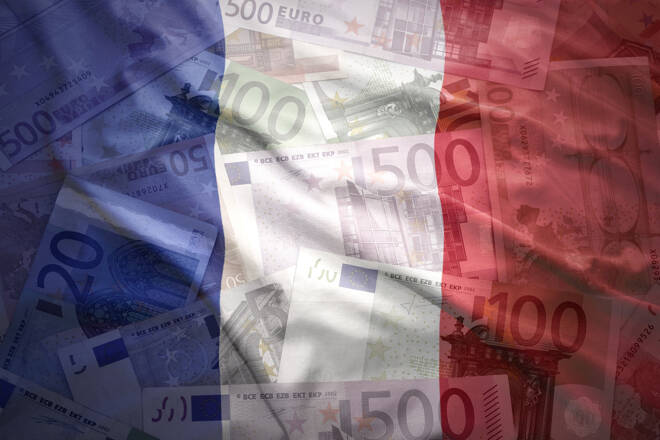Advertisement
Advertisement
France: Revitalising Nuclear Sector Key to Growth and Fiscal Outlook, Green Transition
By:
The crisis in the French nuclear sector will hinder the country’s competitiveness, impair public finances and slow down the green transition without a forceful policy response.
The maintenance issues affecting France’s fleet of nuclear reactors, whose cheap electricity has underpinned French economic competitiveness for decades should have helped offset, not exacerbate, the upward pressure on electricity prices in Europe related to Russia’s weaponisation of its energy exports.
Fixing the reactors to restore capacity they were designed for is the near-term challenge for France. Extending the lifespan of the existing fleet and replacing ageing reactors with new ones remains crucial for France’s – and Europe’s – longer-term economic and fiscal performance and the green transition, all requiring the secure supply of stable, affordable low-carbon electricity.
French industry had long benefited from exactly that, with electricity prices for non-household consumers more than 15% below the EU average between 2010 and 2019, representing a comparative advantage over EU neighbours such as Germany and Italy.
Price Advantage Fading
This advantage has faded in recent months (see Figure 1). One-month ahead baseload power contracts in France averaged about 13 times their 2015-2019 average in the month to 10 October 2022, according to the Bloomberg index, a markedly sharper jump than in the UK (7.6x), Italy (8.8x) and Germany (10x). The wide price spread reflects market worries over the duration of the crisis in France’s nuclear sector.
Figure 1. No French exception: wholesale day-ahead electricity prices in France, Germany, Italy and Spain
Monthly averages, EUR/MWhe
The availability of the French nuclear park – 56 nuclear reactors generating on average 70% of the country’s energy supply, or about 40% of its total energy output – stood at an all-time low of around 41% last month, down from 84% in 2005 (Figure 2). The loss in output is due to the combined impact of maintenance delayed by the pandemic and problems with corrosion at several reactors. France became a net importer in the first half of the year, paying sky-high prices to import electricity, after an extended period as the top exporter in Europe.
Elevated prices have already hit France’s energy-intensive activities, contributing to reduced or suspended production in sectors including steel, glass and metallurgy. France Industrie, the French industry lobby, estimates that high energy prices could lead to a 10% dip in manufacturing in the fourth quarter of the year. Durably higher and more unstable prices represent a long-term threat, weighing on the competitiveness of the French economy.
The domestic nuclear-energy crisis also represents a drag on public finances. Funds allocated to shield the private sector from high energy prices will amount to EUR 100bn over 2021-23, or about 4% of 2021 GDP, according to government forecasts. Scope expects the debt-to-GDP ratio to recede only moderately this year, to 111.8%, down 1pp from 2021, before growing again from 2023 onwards.
Figure 2. Availability of the French nuclear park
Maximum available energy production capacity for the year / maximum theoretical production capacity, %
Bolstering EDF’s Finances One of France’s Main Energy-sector Challenges
Longer term, the regeneration of the nuclear sector will require significant investment by the French State. The government plans to fully nationalise EDF by purchasing the remaining 16% of the company’s capital it did not yet own, for an estimated EUR 10bn. EDF will need further capital injections, with net debt set to rise to around EUR 60bn by the end of 2022.
The government has also earmarked EUR 52bn in public investment for future investment in the sector, with a target of building at least six new-generation nuclear reactors in coming decades.
Finally, the regeneration of the sector is important to France’s energy transition. The high share of nuclear in the country’s energy mix largely accounts for the French economy’s comparatively low carbon intensity. The country has lagged other European countries in developing wind and solar energy. France was the only EU Member State that did not meet renewable energy generation targets in 2020.
The government wants to speed up the approval process for new renewable-energy projects while trying to coax EDF into accelerating the maintenance and repairs needed to bring more nuclear power reactors back online. RTE, the French electricity grid operator, projects that nuclear energy output could return to more typical winter levels as early as mid-January 2023.
Doubts remain over EDF’s ability to meet the announced schedule, in view of the mixed results of the restart programme to date. Some reactors are back on the grid but new delays, due to strikes over pay and conditions and lengthier-than-expected repairs, have occurred. Meanwhile, the technical and financial hurdles that France will have to overcome to renew its nuclear power industry remain considerable given the hefty delays and cost overruns at its newest reactors and the untested modular reactor technology on which it has pinned its hopes for the future.
For a look at all of today’s economic events, check out our economic calendar.
Thomas Gillet is an Associate Director in Sovereign and Public Sector ratings at Scope Ratings GmbH. Brian Marly, Associate Analyst at Scope Ratings, contributed to writing this commentary.
About the Author
Thomas Gilletcontributor
Thomas Gillet is a Director in Scope’s Sovereign and Public Sector ratings group, responsible for ratings and research on a number of sovereign borrowers. Before joining Scope, Thomas worked for Global Sovereign Advisory, a financial advisory firm based in Paris dedicated to sovereign and quasi-sovereign entities.
Advertisement
